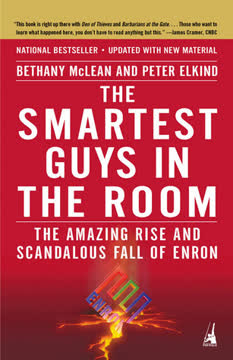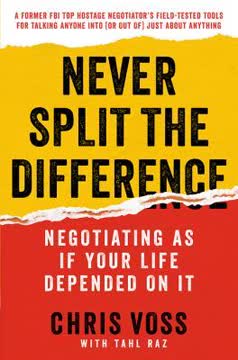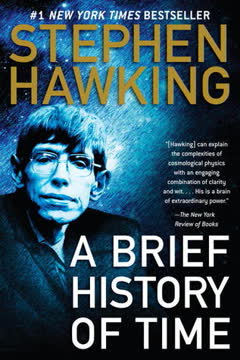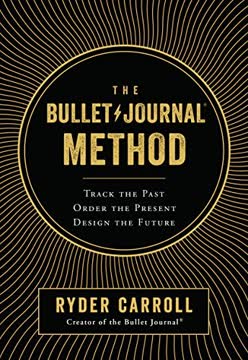Key Takeaways
1. Break Free from Slow Reading Habits
Identify limiting habits. Many readers are held back by habits developed in childhood, such as subvocalization (reading words aloud in your head), moving lips, pointing with a finger, or regressing (re-reading words or lines). These physical and mental crutches severely limit reading speed and can hinder comprehension by keeping you focused on individual words rather than ideas. Becoming aware of these habits is the first step to overcoming them.
Eliminate vocalization. Subvocalization is the biggest speed killer. While you can't eliminate inner speech entirely, you can reduce its intensity and reliance. The goal is to move from sounding out words to recognizing them visually as concepts. Techniques include:
- Using a pacer (finger or pen) to force your eyes forward faster than your inner voice can keep up.
- Chewing gum or humming softly to occupy the vocal cords.
- Consciously trying to take in groups of words rather than single words.
Reduce regressions. Regressing is often a sign of poor focus or trying to read too slowly, which paradoxically makes you lose your place or drift off. Trust your ability to understand the text as you move forward. If you miss something crucial, you can always go back, but make it a conscious decision, not a default habit. Training your focus and increasing your reading speed can naturally reduce the need to regress.
2. Train Your Eyes for Speed and Efficiency
Expand visual span. Traditional reading focuses on one word at a time. Faster reading involves training your eyes to take in chunks of words or even entire lines at once. This requires expanding your peripheral vision while reading and reducing the number of fixations (stops) your eyes make per line. Think of your eyes sweeping across the page rather than hopping from word to word.
Use a pacer. A simple yet effective technique is using your finger or a pen as a guide. Move it smoothly across the line, slightly faster than your comfortable reading speed. This trains your eyes to follow a consistent rhythm and prevents them from stopping or regressing. Gradually increase the speed of the pacer as you become more comfortable.
Practice eye movements. Specific drills can help improve eye muscle flexibility and speed. These might involve quickly scanning columns of text, practicing rapid eye movements between points on a page, or using software designed to flash words or phrases at increasing speeds. Consistent practice helps make these faster eye movements more natural and less tiring.
3. Prioritize Finding the Main Ideas
Read with purpose. Before you start reading, ask yourself why you are reading this material. Are you looking for specific facts, the author's argument, or a general overview? Having a clear purpose helps you focus your attention and filter out less important details. This active approach is far more effective than passively letting your eyes drift across the page.
Identify topic sentences. Most non-fiction writing follows a structure where main ideas are presented clearly, often in topic sentences at the beginning of paragraphs. Train yourself to quickly locate these sentences. They provide a roadmap to the author's thinking and help you grasp the core message without getting bogged down in supporting details or examples initially.
Distinguish main points from support. Learn to differentiate between the central arguments or facts and the examples, anecdotes, statistics, or explanations used to support them. While the supporting details are important for full comprehension, identifying the main ideas first allows you to build a framework of understanding. You can then revisit the supporting details as needed to deepen your grasp of the material.
4. Build a Robust Reading Vocabulary
Vocabulary is comprehension. A strong vocabulary is fundamental to understanding complex texts. Encountering unfamiliar words forces you to stop, guess, or skip, all of which disrupt flow and reduce comprehension. The more words you know, the smoother and faster your reading will be, as your brain can process meaning more efficiently.
Learn words in context. The most effective way to build vocabulary is by seeing words used in different contexts. When you encounter a new word, try to infer its meaning from the surrounding sentences. Don't just skip it; pause briefly to consider its possible meaning based on the topic and sentence structure.
Develop a system. Don't rely solely on context; actively work on expanding your vocabulary.
- Keep a list of new words you encounter.
- Look up definitions and pronunciations.
- Use flashcards or vocabulary apps for spaced repetition.
- Try to use new words in your own writing or conversation.
- Read widely across different subjects to encounter diverse language.
5. Engage with Aggressive Comprehension
Be an active reader. Don't just passively receive information. Approach the text with energy and intent. This means actively thinking about what you're reading, making connections, and anticipating what comes next. Aggressive comprehension is about attacking the text to extract its meaning, not waiting for the meaning to come to you.
Ask questions constantly. As you read, mentally (or even physically, by writing notes) ask questions about the material.
- What is the author's main point here?
- How does this relate to what I just read?
- Do I agree with this statement? Why or why not?
- What evidence is provided? Is it convincing?
- What are the implications of this information?
This questioning process forces deeper engagement and better retention.
Synthesize and connect. Don't treat each paragraph or section in isolation. Constantly look for how different parts of the text relate to each other and to your existing knowledge. Try to summarize sections in your own words as you go. This active synthesis helps solidify understanding and build a coherent mental model of the information.
6. Master the Art of Skimming
Skim with purpose. Skimming is not just glancing randomly at a page; it's a targeted strategy to get a quick overview or find specific information. Define your objective before you start skimming. Are you trying to decide if the material is worth reading in detail, looking for a particular date or name, or trying to grasp the general scope of the content?
Look for key indicators. When skimming, your eyes should move rapidly, focusing on elements that typically signal important information.
- Headings and subheadings
- First and last sentences of paragraphs
- Introductions and conclusions
- Bold or italicized text
- Lists and bullet points
- Charts, graphs, and images
- Names, dates, and numbers
Combine skimming and reading. Skimming is often a first pass before a more thorough reading. Use it to get the lay of the land, identify the most important sections, and build a mental outline. Then, go back and read the crucial parts more carefully. This two-step process is much more efficient than reading everything at the same pace.
7. Cultivate a Questioning Mindset
Read critically. Don't accept everything you read at face value. A questioning mind is essential for evaluating information, especially in an age of abundant and varied sources. Think about the author's perspective, potential biases, and the quality of the evidence presented. This critical approach leads to deeper understanding and better retention.
Challenge assumptions. As you read, identify the underlying assumptions the author makes. Do you agree with these assumptions? How would the argument change if the assumptions were different? Questioning assumptions helps you see the structure of the argument more clearly and evaluate its validity.
Formulate your own opinions. Reading is a dialogue, not a monologue. Engage with the author's ideas by forming your own opinions and counter-arguments as you read. This active mental process makes the material more memorable and helps you integrate it into your own thinking. Don't just absorb information; interact with it.
8. Practice Consistently for Lasting Improvement
Reading is a skill. Like any skill, reading better and faster requires deliberate practice. You won't see significant improvement overnight. Commit to regular training sessions, even short ones, to work on specific techniques like pacing, expanding visual span, or identifying main ideas. Consistency is more important than the length of individual practice sessions.
Set specific goals. Don't just say "I want to read faster." Set measurable goals, such as increasing your words per minute by a certain percentage, reducing regressions by half, or being able to identify the main idea of a chapter in under two minutes. Specific goals make it easier to track progress and stay motivated.
Apply techniques widely. Don't limit your practice to dedicated training materials. Consciously apply the techniques you're learning to your everyday reading – emails, articles, reports, and even leisure reading. The more you integrate these skills into your regular reading habits, the more automatic and natural they will become, leading to lasting improvement.
Last updated:
Review Summary
How to Read Better and Faster receives mostly positive reviews, with readers praising its effectiveness in improving reading speed and comprehension. Many report significant increases in their reading pace after following the book's exercises and techniques. Reviewers appreciate the step-by-step approach, practical advice, and emphasis on maintaining comprehension while increasing speed. Some criticize the book's length and repetitiveness but still find value in its content. Overall, readers recommend it as a useful tool for those looking to enhance their reading skills and efficiency.
Similar Books









Download PDF
Download EPUB
.epub digital book format is ideal for reading ebooks on phones, tablets, and e-readers.






